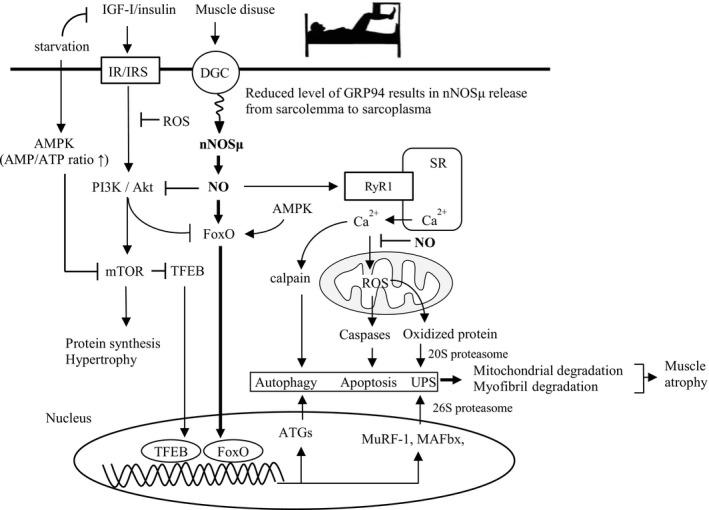Figure 2.

Prolonged skeletal muscle inactivity (disuse). Prolonged muscle disuse leads to nNOS‐mediated muscle atrophy via a FoxO‐dependent pathway. The stress protein, Grp94, while serving as a chaperone for folding IGFs and antioxidant cytoprotection, functions to stabilize subsarcolemmal nNOSµ. AMP/ATP, adenosine monophosphate/adenosine triphosphate; AMPK, AMP‐activated protein kinase; ATGs, autophagy‐related genes; DGC, dystrophin glycoprotein complex; FoxO, Fork head box O; GRP94, glucose‐regulated protein 94; IGR‐I, insulin‐like growth factor‐I; IR/IRS, insulin receptor/ insulin receptor substrate; MAFbx, muscle atrophy F box; mTOR, mammalian target of rapamycin; MuRF‐1, muscle ring finger 1; nNOSμ, neuronal nitric oxide synthase μ; NO, nitric oxide; ROS, reactive oxygen species; RyR1, type 1 ryanodine receptor; SR, sarcoplasmic reticulum; TFEB, transfactor EB; UPS, ubiquitin proteasome system
